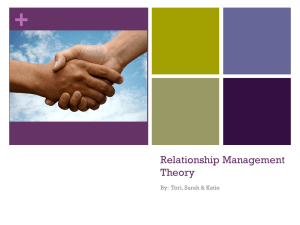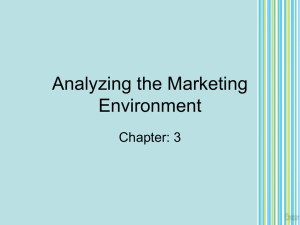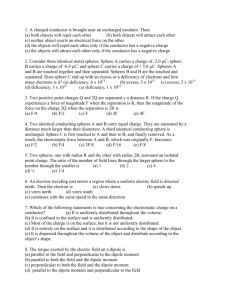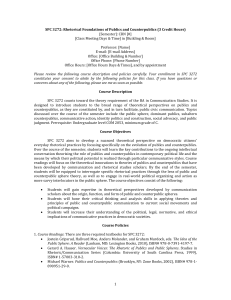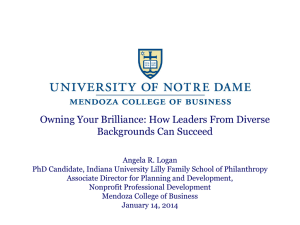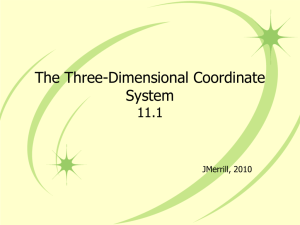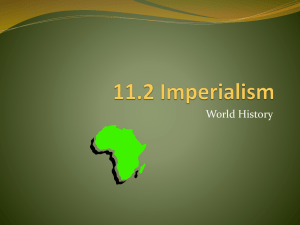Nancy Fraser - Arguing in Public
advertisement
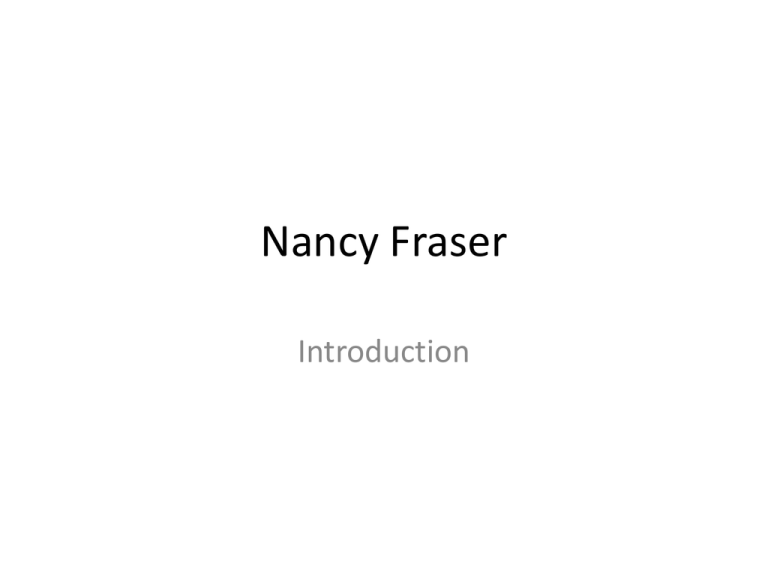
Nancy Fraser Introduction Who she’s writing to • Critiquing Jurgen Habermas’s famous 1962 book The Structural Transformation of the Public Sphere What Habermas Argued • Outlines rise and fall of the “Bourgeois Public Sphere” in 1700s and early 1800s Europe • Market Capitalism led to institutions in-between economy and state: this included newspapers, salons, coffee-shops, and debating societies • This led to the rise of public opinion in which “private citizens” came together to engage in “rational-critical debate” on public issues • Decline came with immense social and economic changes, including the rise of consumer capitalism which blurred the lines between public/private, state/civil society and replaced “rational-critical debate” with “consumption” and it still exists to this day. Fraser’s Critique • Fraser says Habermas “idealizes the public sphere” as the most inclusive and fair way to solve problems • Fraser argues that the public sphere is defined more by who is left out than who is allowed in • Fraser doesn’t want to do away with this theory entirely, but wants to find a “nuanced alternative” (62). Habermas’s Four Flawed Assumptions • 1) In the public sphere people can set aside their differences in social status and deliberate as equals • 2) A single, comprehensive public sphere is the best way to ensure “rational-critical debate” • 3) The public sphere should be debating public issues of the common good, not private issues or private interests • 4) A public sphere requires a distinct line between the state and civil society Bracketing Differences • You can’t just pretend difference doesn’t exist and then proceed—it doesn’t work like that. “Such bracketing usually works to the advantage of dominant groups in society and to the disadvantage of subordinates” (64) • “We should question whether it is possible even in principle for interlocutors to deliberate as if they were social peers in specially designated discursive arenas, when these discursive arenas are situated in a larger societal context that is pervaded by structural relations of dominance and subordination” (65) Multiple Public Spheres • In a “single, comprehensive, overarching public,” she writes, “subordinated groups would have no arenas for deliberation among themselves about their needs” (66). • Subaltern Counterpublics - subordinated social groups like women, workers, people of color, gays and lesbians who “have found it advantageous to constitute alternative publics…parallel discursive arenas where members of subordinated social groups invent and circulate counterdiscoureses, which in turn permit them to formulate oppositional interpretations of their identities, interests, and needs” (67) Common Concerns and Private Interests • Counterpublics are crucial to forming public opinion—they are agitators. For example: – “until quite recently, feminists were in the minority in thinking that domestic violence against women was a matter of common concern and thus a legitimate topic of public discourse. The great majority of people considered this issue to be a private matter between what was assumed to be a fairly small number of heterosexual couples” (71) • Feminists formed “subaltern counterpublics from which we disseminated a view of domestic violence as a widespread systemic feature of male-dominated societies. Eventually, after sustained discursive contestation, we succeeded in making it a common concern” (71). Strong and Weak Publics • Weak publics just form public opinion, strong publics can make decisions based on public opinion • “The force of public opinion is strengthened when a body representing it is empowered to translate such “opinion” into authoritative decisions” (75). • Any public sphere where there’s a sharp separation between public opinion and the state won’t be able to manage itself, communicate with other publics, or make important decisions: Thus “the bourgeois conception of the public sphere, therefore, is not adequate for contemporary critical theory” (76). • What we need is a new kind of public sphere that lets us imagine a better role for public spheres than just for “opinion formation removed from authoritative decision-making” (76). Conclusions • Fraser argues we need a new theory of public spheres that 1) acknowledges how social difference taints deliberation, 2) makes room for multiple publics, 3) re-imagines lines between public and private to determine what counts as public good, and 4) makes room for strong and weak publics (77)



